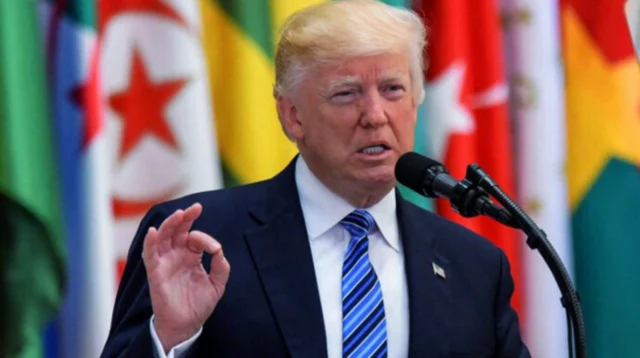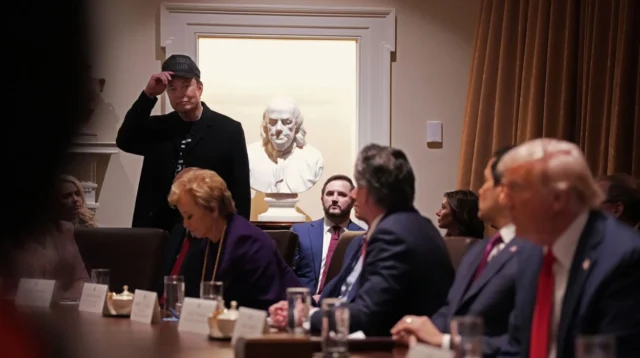Since 1946, the U.S. has provided Israel about $174 billion in bilateral aid, cementing itself as Israel’s chief security ally. Under a 2016 Memorandum of Understanding, Washington pledged $38 billion in military assistance for 2019–2028, sustaining Israel’s “qualitative military edge” policy to ensure superiority against regional threats.
By 2025 there were active Foreign Military Sales (FMS) contracts with Israel, valued at $39.2 billion. These encompass hi-tech stuff like the F-15IA fighter airplanes, and a complete assortment of precision-guided missiles. Following the attacks of October 7, 2023, by Hamas, the US began to rush military deliveries to Israel, including thousands of laser-guided missiles, bunker busters, and artillery shells. This has become one of the quickest military assistance rises in the contemporary US-Israel ties with almost 17.9 billion of direct military help throughout the period.
This increased stream of weapons does not just indicate a strategic investment in Israeli security, but also, an increased interest in the offensive capabilities of Israel. The change of the predominantly deterrence stance to include preemptive and retaliatory capabilities casts some basic doubts about the long-term strategic balance within the region.
Growing Criticism And Calls For Oversight
The use of US-made weapons in populated communities in Gaza has sounded alarms within the humanitarian organizations. According to Human Rights Watch and Amnesty International reports, the airstrikes that have been carried out using the munitions provided by the Americans have had tremendous civilian losses and destruction of infrastructures. These accusations have provoked the investigations of possible breach of international humanitarian law independently.
The debate extends beyond rights groups. In January 2025, UN rapporteurs cited evidence that repeated US arms transfers could be interpreted as complicity if used in actions breaching the laws of war. The implications for the United States go beyond reputational damage and extend to possible legal accountability under international arms trade treaties and domestic export control laws.
Congressional Pushback On Unchecked Sales
The magnitude and control of the current shipments of weapons has been the subject of bipartisan concern among several US lawmakers. Since late 2024, Senator Bernie Sanders and Representative Barbara Lee have submitted several resolutions of disapproval, in attempts to stop certain arms packages. They consist of protests against F-15IA sales and precision guiding missiles.
Six of those resolutions were tabled in the period between December 2024 and April 2025 alone which represents a huge rise in legislative opposition. Opponents cite State Department memos leaked out suggesting that in-house warnings of possible abuse of US weapons were ignored. The absence of holistic end use surveillance systems also contributes to the pressure on a more vigorous oversight procedure prior to subsequent deliveries.
Strategic Imperatives Versus Political Risks
Washington’s rationale for maintaining the supply of advanced weaponry rests on Israel’s legal entitlement to QME. Established in US law in 2008, QME mandates that Israel must maintain a significant edge over any combination of potential adversaries in the region. The Biden administration has invoked this principle to justify the acceleration of high-tech arms shipments in 2025, particularly given rising tensions with Hezbollah and Iranian-backed militias in Lebanon and Syria.
Yet the application of QME is evolving. Rather than focusing solely on defense, the principle is increasingly interpreted to include offensive capabilities. Such a reading erases the distinction between deterrence and escalation and causes worrying signals in policy circles of the dangers of additional destabilization of the region.
Declining Public Support For Military Aid
According to recent polling conducted by Pew Research in the middle of 2025, the American people increasingly lost support to continue the military assistance to Israel. It was the first time since the October 2023 attacks that most people–about 60 percent–were opposed to the continued high-volume weapons transfers, particularly those that result in civilian casualties. There are cited economic issues and foreign policy exhaustion.
Such a change in mood has political implications, especially with the 2026 midterm elections ahead. The swing district candidates are being pressed to adopt clear positions on US-Israel policy and voters are growing appreciative of diplomatic solutions as opposed to military ones.
Implications For US Foreign Policy And Middle East Peace
The widening circle of US offensive-weapons sales to Israel presents a challenge to American credibility of being an impartial mediator in peace talks. Although publicly the US still speaks in terms of a two-state solution, its military relationship with Israel makes it difficult to appear impartial to the Palestinians and other players in the region. Diplomats and foreign policy analysts maintain that exactly due to such open displays of military support, the capacity of Washington to influence has been waning.
Consideration Think tanks such as J Street and the Carnegie Endowment for International Peace have encouraged Washington to add conditionality to any transfers of arms. Such policy champions say capping offensive weapons especially air to land missiles and heavy artillery would reassert American adherence to peaceful solutions and minimize the civilian casualties.
Diplomatic Leverage Versus Security Guarantees
The dilemma that the Biden administration has to deal with is a complex one. Limiting the transfer of arms would jeopardize its relationship with one of its biggest allies particularly when the Israeli leaders are mentioning the existential threats. Nonetheless, such unconditional assistance weakens the American leverage in affecting Israeli policy, such as settlement expansion and actions during military actions.
An increasing movement in the State Department is to redefine aid- maintain defensive systems such as Iron Dome, and restrict offensive platforms that prolong conflict. Senior officials have even proposed new models that relate aid disbursement to adherence to human rights standards but no consensus has been achieved that cuts across the board.
Reassessing Future Military Aid Paradigms
The very size and character of the sales of offensive weapons to Israel in 2025 have a central point in American foreign policy. The conventional paradigm that merges security aid with blind military alliances is becoming more and more contradictory in legal, moral, and strategic aspects. It is seen that reforms in the policy of the export of arms, including stronger end-use verification, requiring congressional approval of major sales and conditionality clauses have become the focus of policy discussions in Washington.
Even though strategic collaboration with Israel is still one of the pillars of the US Middle East policy, the terms and tools of such collaboration are being rapidly reconsidered. The overlap of domestic domestic political pressure, international legal norms and shifting conflict dynamics is driving a more flexible and principled approach to military assistance.
The boundaries of US military aid to Israel are no longer imaginary, it has become the focal point of the usefulness of diplomacy of the US, integrity of international humanitarian law, and peace in the Middle East. It could be the ability of policymakers to adjust aid in accordance with these realities that determines not only bilateral relationships, but the overall outlines of US leadership in a changed global order.





